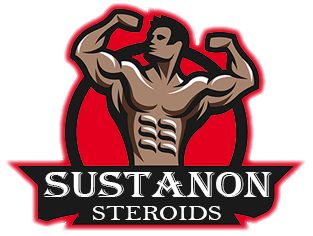Possible Side Effects (0.1% of users)
Whilst testosterone is considered to be one of the mildest steroids available, some users may suffer from side effects therefore it’s important that you fully understand what they are. No matter which anabolic product you take, you’re never going to be entirely free of side effects - they coincide with the use of any steroid, be it mild or highly potent. What is important to understand is that these issues can largely be controlled, and in our PCT section, we’ll outlay how you can implement effective cycle therapy to do just that.

Elevated Negative Cholesterol Levels
Using exogenous testosterone can suppress (good) HDL cholesterol by up to 20%. This gives rise to an increase in LDL (bad) cholesterol, thus laying the foundation for potential circulatory issues in regards to the unrestricted movement of blood within the body.
This can in extreme cases lead to cardiac arrest and strokes, though it’s more likely that it’ll simply affect respiratory function in a mild capacity. Should you get regular blood checks whilst on cycle, you’ll be able to determine whether or not your levels are looking “ok.”
If not, there are several means by which one can control them – this is why it’s important to consult with a GP before, during and after your anabolic cycles. Otherwise, you’re taking a fairly large risk.

Androgenic Issues
Androgenic issues are possible whilst using this product (being that it is itself an androgenic hormone, this probably stands to reason.) These issues can include, but are not limited to:
- Sporadic hair growth across the body and face
- Sporadic baldness (head)
- A deepening of the voice (this is realistically only going to be an issue for a female, but typically a female would never or should never use testosterone anyway)
- The development of adverse skin conditions like acne
These elements can again be controlled with relative ease if you’re a male, but as for a female, however, this will not be the case.
The Suppression Of Natural Testosterone Output
You may think that when reading the above description alone, this element makes absolutely no sense. Unfortunately though, this is one of the few “guaranteed” side effects when using any anabolic steroid whatsoever.
As a result of integrating an external source of testosterone, your body will eventually become reliant on this source over the course of your cycle and deem it to be its “default” means of accessing testosterone.
As soon as you stop using this source, you’ll find that your organic production has shut down, being that the body didn’t think it was needed any longer.
Through an effective post cycle therapy phase, you can restore these levels within a fairly short time frame. Never make the mistake of thinking that this PCT window is optional though, otherwise it could take up to a year before your levels are able to fully restore.

Estrogenic Issues
Estrogenic issues are a possibility being that this product aromatises. These issues can be fairly easily safeguarded against, but it’s important that you seek immediate medical advice should any of them manifest in a potent fashion:
- Swelling around the ankles and wrists
- Excess fluid retention underneath the surface of the skin
- The possible development of gynecomastia
In regards to the first two elements (and largely the third too), a SERM (Selective Estrogen Receptor Modulator) product would almost definitely be enough to ensure that these issues did not develop in a potent fashion.
In regards to the last, you will need to ensure that you have an AI (aromatase inhibitor) on hand like Letrozole, in case it starts to take a prominent hold of you and physical symptoms develop in a potent fashion. This inhibitor will help to shut down estrogen production and ideally reverse the symptoms of gynecomastia. If it does not, you will need to seek immediate medical advice for swift intervention.
The above four areas are the most relevant in regards to adverse issues arising, and anything else that you may encounter of a negative nature stands to be mild - i.e general nausea, headaches, possibly dizziness and sleeplessness.
The above symptoms are all largely “typical” in relation to using any pharmaceutical grade product though, should it not agree with your genetic make-up, so their possible manifestation is not highly alarming in its own right.
